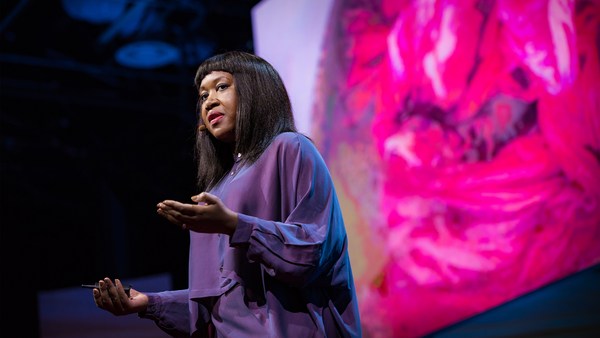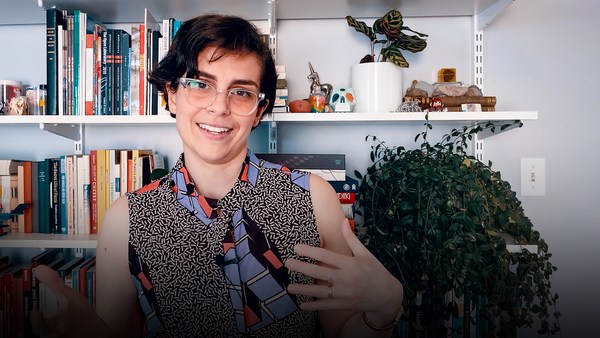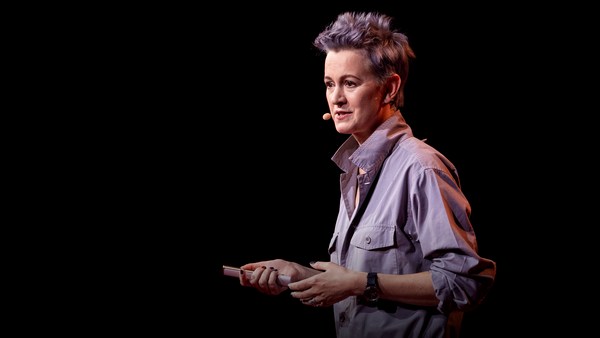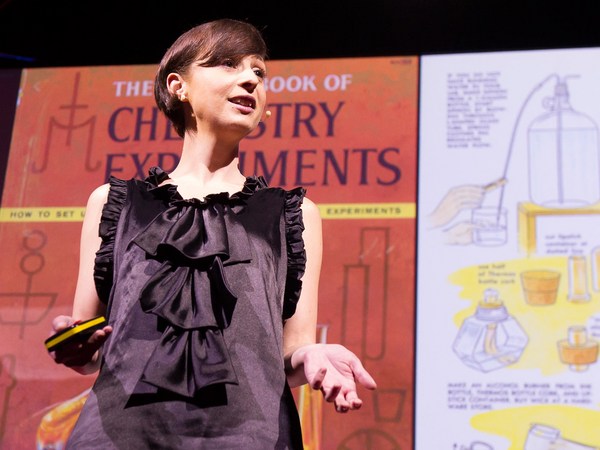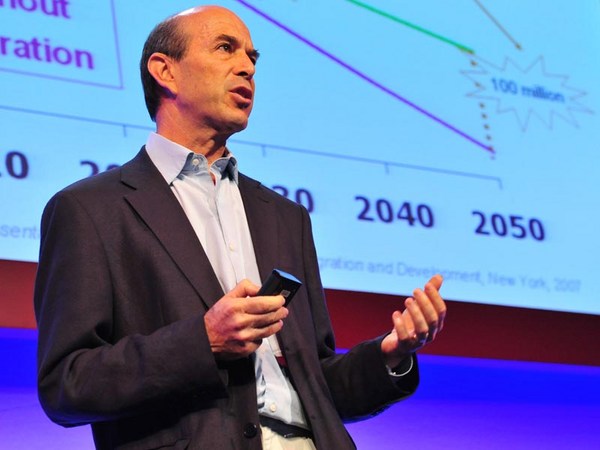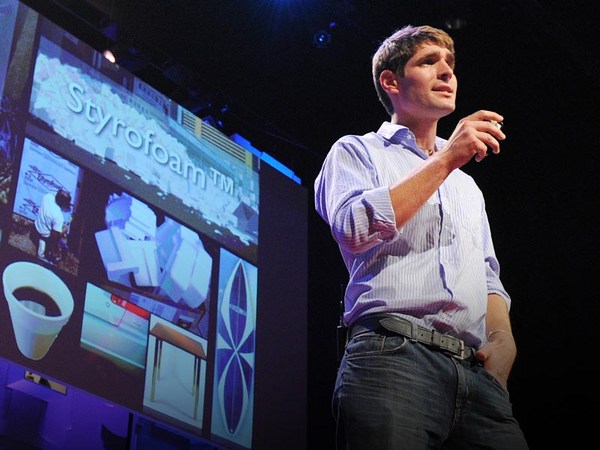In 1998, my friends and I won a national art competition. The prize was a week in Disneyland Paris, with hundreds of other children from across the world, as delegates to UNESCO's International Children's Summit. Now this was no ordinary trip to Disneyland. Between running riot in the park and making friends, we workshopped the future of this planet. How could we overcome the problems of pollution and their threats to human and environmental health? How could we guarantee universal human rights of equality, justice and dignity?
Towards the end of the summit, we created a 20-year time capsule, with each country planting a vision of the future they hoped for. But as I look around today, it's clear to me that those visions have not come true yet. We're confronted by the same crises, made infinitely worse through decades of geopolitical inaction. We now face global existential risks as a result of the climate emergency, with the world's least-resourced and most disenfranchised made more vulnerable despite having contributed least to the problem. That trip to Disneyland taught me that art and design had the power to imagine other possible futures. The question is: "How do we actually build them?"
Today, I lead a design agency called Faber Futures, and my team and I design at the intersection of biology, technology and society. Through research and development collaborations, partnerships, and other strategies, we model a future in which both people and planet can thrive and where the role that biotechnology plays is shaped through plural visions.
Our design work prototypes the future. We have developed toxin-free, water-efficient textile dye processes with a pigment-producing bacterium, pioneering new ways of thinking about circular design for the textile and fashion industries.
You've probably already heard of data surveillance, but what if it was biological? Using open-source data on the human microbiome, we’ve created experiential artworks that engage with the ethics of DNA mining. How can we embed a culture of multidisciplinary codesign from within the industry of biotechnology? To find out, we designed the Ginkgo Creative Residency, which invites creative practitioners to spend several months developing their own projects from within the Ginkgo Bioworks foundry. We also generate and publish unique and expansive dialogues between people with different types of knowledges -- Afrofuturists with astrobiologists, food researchers with Indigenous campaigners. The stories that they and others tell give us the tools we need to imagine other biological futures.
Design deeply permeates all of our lives, and yet we tend to recognize things and not the complex systems that actually produce them. My team and I explore these systems, connecting fields like culture and technology, ecology and economics. We identify problems, and where value and values can be created. We like to think about a design brief as an instruction manual, mapping the context of the problem, and where we might find solutions.
Getting there might involve establishing new networks, building new tools, and even infrastructure. How all of these pieces interact with one another can determine research and development, material specification, manufacturing and distribution. Who ultimately benefits, and at what environmental cost. So you can start to imagine the kinds of systems that might drive the design of your smartphone or even a rideshare service. But when it comes to the design of biology, things become a little bit more abstract.
Organism engineers design microbes to do industrially useful things, like bioremediate toxic waste sites or replace petroleum-based textiles with renewable ones. To architect this level of biological precision and performance at scale, tools like DNA sequencing, automation and machine learning are essential. They allow the organism engineers to really zoom in on biology, asking scientific questions to solve deep technical challenges.
Successful solutions designed at a molecular scale eventually interact with those at a planetary one. But if all of the research and development focuses on the technical question alone, then what do we risk by excluding the broader context? We've all spent over a year now living at an unprecedented intersection between biology, technology and society. We've witnessed, with the rapid development of the COVID-19 vaccine, that although techno-fixes offer us a critical remedy, they don't always provide a panaceum, and that’s because the real world is a complex social and economic one, where dominant systems determine the distribution of benefits.
It will be another two years before hundreds of millions across the world receive their emergency vaccines, which, in a globalized world, risks undermining its efficacy on all our communities.
Scientific endeavors have long been considered separate to real-world contexts, an idea that places profound limitations on the promises of biotechnology. By missing the full scope of design, we may think we’re solving problems and realize later that actually, not much has changed.
And a similar logic is emerging in biotechnology for consumer goods and industry. So far, it offers innovations for commodities markets, drop-in replacements that change problematic ingredients, and yet sustain prevailing mindsets and dynamics of power. Again, technically sound solutions that unwittingly reinforce social and ecological inequities.
Addressing these asymmetries requires us to take a more revolutionary approach, one that begins by asking "What kind of a world do we wish for?" So what if we could do both? What if we could design at the molecular scale, with the real world in mind? A more integrated approach to designing with biology requires us to ask more nuanced questions; not "What will people buy," but "What if we put communities, rather than commodities, first." "Could distributed biotechnology enable people to find local solutions to local problems?" "Can we move beyond a biotechnology that creates monocultures to one which, like nature itself, embraces a multiplicity of adaptations?" "How do we equip the next generation with the tools, spaces and communities they need to broaden their skills, knowledge and ideas?" An incredible amount of work that begins to address these questions is already underway.
The Open Bioeconomy Lab, which has nodes in the UK, Ghana and Cameroon, designs open-source research tools to expand geographies of innovation into resource-constrained contexts. Over thousands of years, we've domesticated plants to make them edible, creating nutrient-rich, diverse and delicious food cultures. MicroByre wants to do the same, but for microbes. The San Francisco based start-up assembles diverse microbial libraries for a more resilient biological toolkit. Imagine the expanded color palettes and different applications, from different types of pigment-producing bacteria. And from London's famed art school, Central Saint Martins, students from different disciplines are generating new sustainable design practices from biological medium. You'll find them at work in a wet lab, nested between historic fashion textiles and architecture departments, a radical reunification of the arts and sciences in education. Many examples of this type of systemic design work in biotechnology exist -- piece them together, and you start to glimpse different visions of our biological futures.
I don't know what happened to the time capsule we left behind in Paris, but I do remember wishing for a more just and meaningful world, where all of nature can thrive. In their own significant ways, technology and design have played their role in denying us this, but it's in our power to change that. Fundamentally, this means recognizing that the design of, with and from biology is designing systems and not stuff, and that with a truly ambitious design proposition, one that’s based on values that center flourishing, caretaking and equity. We have the opportunity to build truly transformative systems, systems that open up holistic measures of value and impact, and how we think about scaling innovation and doing business for the futures we now need.
